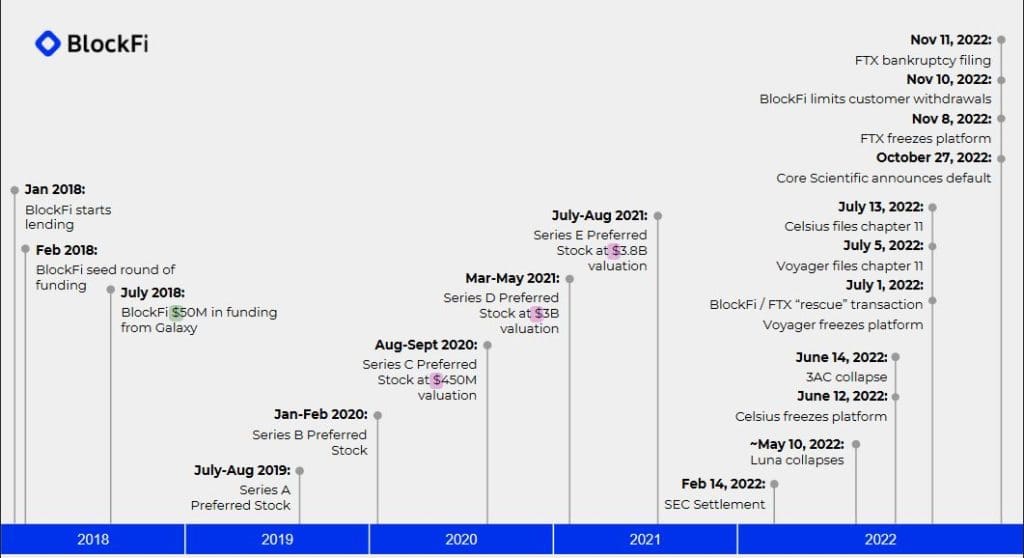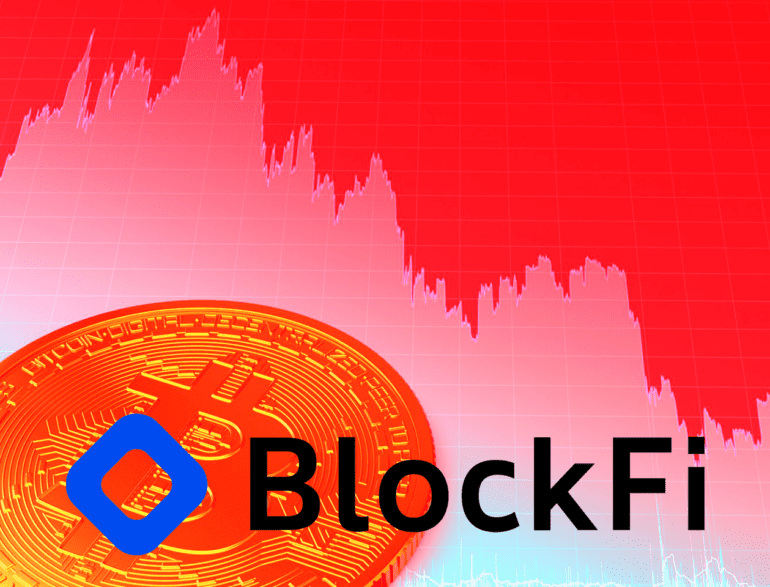A week after halting customer withdrawals, BlockFi said Monday morning it is filing for Chapter 11 bankruptcy.
In the press release, the firm blamed FTX outright and said the restructuring would help them recover funds stuck in the other bankrupt exchange.
According to a public Petition from investors, BlockFi owes a $275M unsecured loan to FTX U.S. (West Realm Shires Inc), among other unsecured creditors. The firm owes $729M to Ankura Trust Company and an outstanding $30M towards a settlement with the SEC.
Mark Renzi of Berkeley Research Group, the company’s financial advisor, said the halting of withdrawals was an action by the board to protect clients. The bankruptcy declaration was released late Monday.
“With the collapse of FTX, the BlockFi management team and board of directors immediately took action to protect clients and the Company,” Renzi said. “From inception, BlockFi has worked to shape the cryptocurrency industry and advance the sector positively. BlockFi looks forward to a transparent process that achieves the best outcome for all clients and other stakeholders.”
FTX to the rescue
The New Jersey-based firm stated more than 100,000 creditors are now waiting for a bankruptcy payout. The estimated assets and estimated liabilities were from $1B to $10B.
In a publically available bankruptcy filing, Renzi said despite the terrible market conditions, BlockFi was well positioned until the “FTX debacle” came around and ruined everything. Renzi said that the “rescue” promised by FTX to safeguard client funds through a $240M buyout was a farce.
In July, BlockFi stayed alive through a $400M credit facility deal with FTX, with an option for an outright sell-out for $240M. Instead of bailing out the firm in November when BlockFi asked for cash, they received nothing.
“On Nov. 8, 2022, the debtors requested an additional $125 million of borrowings pursuant to the terms of the FTX Loan Agreement, which FTX did not provide,” the document said.
Like a golden age alpine expedition gone wrong, BlockFi’s lifeline turned into an executioners tether that sent the whole crew down after FTX. Renzi said that the company paid out stock options to make ends meet.
“BlockFi accepted this offer to stave off a liquidity crisis and avoid harm to its clients, despite requiring its executives and employees to sacrifice hundreds of millions of dollars in equity value while continuing to work increasingly hard without the potential upside of equity ownership otherwise offered,” Renzi wrote. “FTX’s apparent ‘rescue,’ which began in the summer of 2022, stabilized BlockFi. But that was short-lived. Over the past few weeks, exposure to FTX exacerbated rather than cured BlockFi’s ailments.”

According to the bankruptcy declaration, Alameda Reaserarch defaulted on a $680M loan to BlockFi. The report stated FTX employees sent unaudited quarterly statements and talked with BlockFi regularly, making solvency claims.
Blame it on Sam
At the time of the FTX golden lifeline, BlockFi CEO Zac Prince said on Twitter that things looked rosy from where he sat.
“Outside this transaction, we realize that there is a lot of fear, uncertainty, and doubt in the crypto markets,” Price said. “From our vantage point, we continue to see a healthy ecosystem on the rise.”
According to the filing, there was no reason for alarm; originations had shot through the roof.
“BlockFi experienced rapid growth; between 2019 and March 2022, total trading volume grew from $2 million to more than $23 billion as of March 2022 (on an LTM basis), while deployable assets grew from $345 million to $14.8 billion, and gross loan originations expanded from $687 million to more than $47 billion.”
The firm now has about $256.9M of cash on hand, raised “in preparation for these chapter 11 cases,” which is enough to “provide sufficient liquidity to support certain operations during the restructuring process.”
Just in time for Christmas bonuses
The lawyers handling the bankruptcy cases of the eight listed BlockFi family firms under Chapter 11 will receive around $6.3M in retainer and legal fees to help smooth the transition. According to the first-day file, the firm owes more than $1.1B to the top unsecured creditors alone.
“The firm said it would still go through with “first-day” pending court approval to pay employee wages and benefits and a critical and essential employee retention plan. According to the filing, the firm and its entities employed 292 employees and 82 independent contractors but sent out warning notices for layoffs to about two-thirds of them.
“The company today also initiated an internal plan to considerably reduce expenses, including labor costs,” the firm said in a release.
The $30M to the SEC is a part of the $100M settlement for allegedly offering high-yield accounts over 10% that were not registered.
The non-guilty fine agreement came in February when the SEC reportedly sniffed out similar lending practices at Celsius, Voyager, and Gemini. Accordingly, Coinbase scrapped its lending product in compliance with SEC warnings.
BlockFi CEO and founder Zac Prince did not respond to a request for comment.


